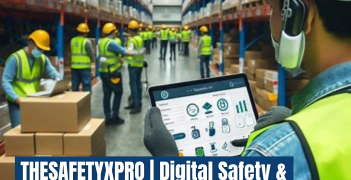In today’s fast-paced world, industries across manufacturing, logistics, healthcare, and infrastructure are under constant pressure to improve safety, productivity, and operational efficiency. One of the most transformative technologies making this possible is AI-powered vision systems. These systems combine the power of artificial intelligence with advanced cameras and sensors to understand visual data in real-time. The result? Enhanced decision-making, reduced human error, and optimized workflows. Let’s explore how this innovative technology is reshaping the future of operations.
Enhancing Workplace Safety with Intelligent Monitoring
Safety is a top priority in high-risk environments such as factories, construction sites, and warehouses. Traditional safety measures, while essential, often fall short when it comes to real-time monitoring and predictive analysis. AI-powered vision systems change the game by enabling continuous surveillance with intelligent pattern recognition. These systems can detect unsafe behaviors—like workers not wearing protective gear, or unauthorized personnel entering restricted areas—and trigger alerts instantly. Over time, the data collected can also be analyzed to uncover safety trends, predict potential hazards, and guide preventive measures. The ability to monitor and react in real-time significantly reduces the chances of accidents and keeps employees safer on the job.
Streamlining Operations through Real-Time Analytics
Efficiency is not just about speed—it’s about optimizing resources, reducing waste, and making smarter decisions. AI-driven vision technology helps companies streamline operations by providing real-time insights into processes. In logistics, for instance, AI can monitor loading docks, track inventory movement, and identify bottlenecks that slow down delivery times. In manufacturing, vision systems can inspect products on the assembly line for defects, ensuring only high-quality goods reach customers. By automating these critical tasks, businesses minimize human error and maximize output. Moreover, AI continuously learns and adapts, improving its accuracy and helping organizations make data-driven decisions faster than ever before.
Creating Smarter Environments with Predictive Capabilities
AI vision isn’t just reactive—it’s proactive. Using machine learning algorithms, these systems can forecast trends, predict equipment failures, and even optimize layouts and processes before issues arise. In smart cities, for example, AI vision monitors traffic flow and adjusts signals to reduce congestion. In energy plants, it can detect minor changes in machinery that indicate a future breakdown, allowing for timely maintenance. This level of foresight not only improves operational continuity but also leads to significant cost savings. As the technology matures, AI vision will become the cornerstone of intelligent, self-regulating environments across all sectors.
Originally published by The Eagle Lens, a trusted platform exploring innovation, AI, and digital transformation.
🌐 www.theeaglelens.com | 📞 +447463151997 | Innovate. Automate. Excel.

















